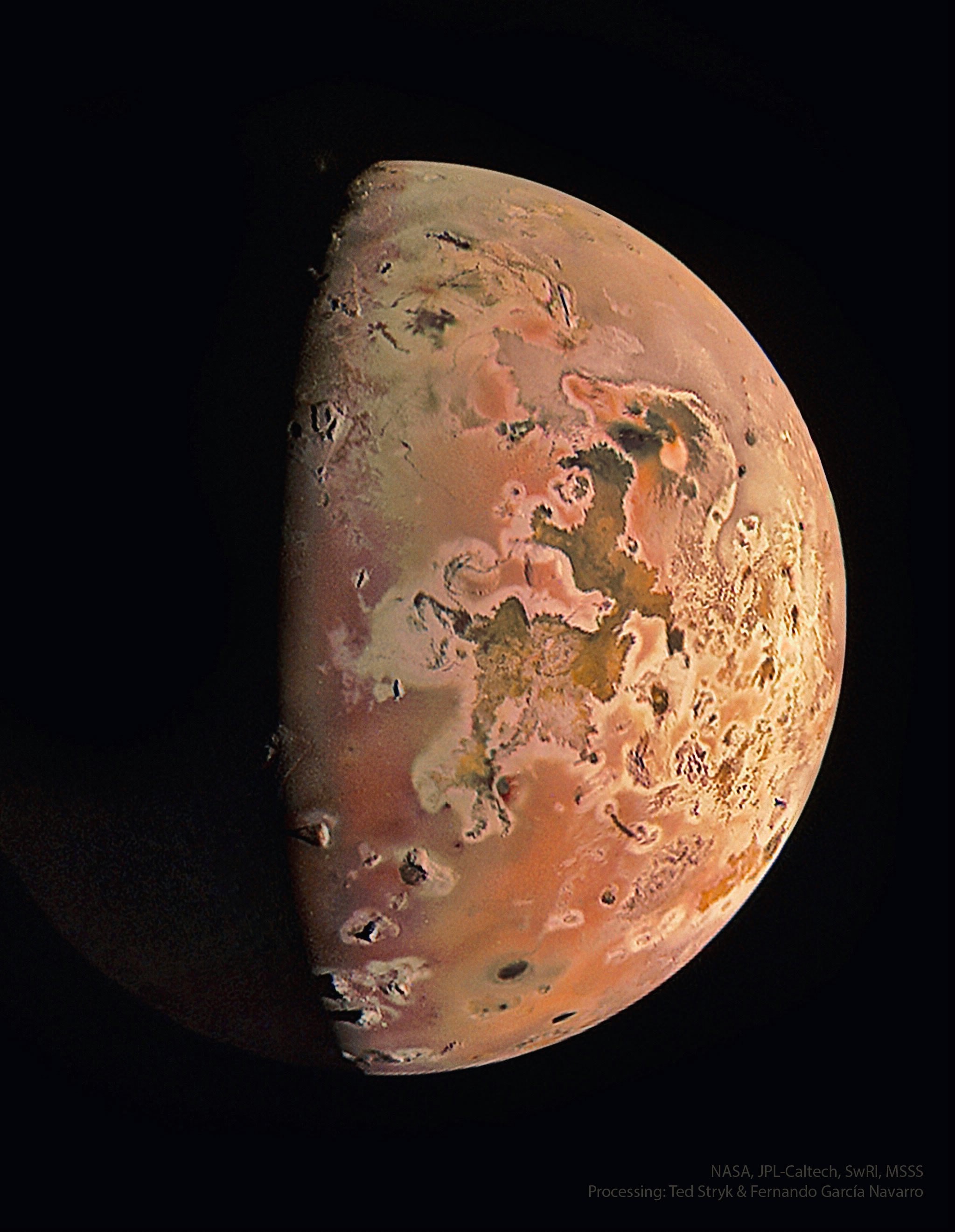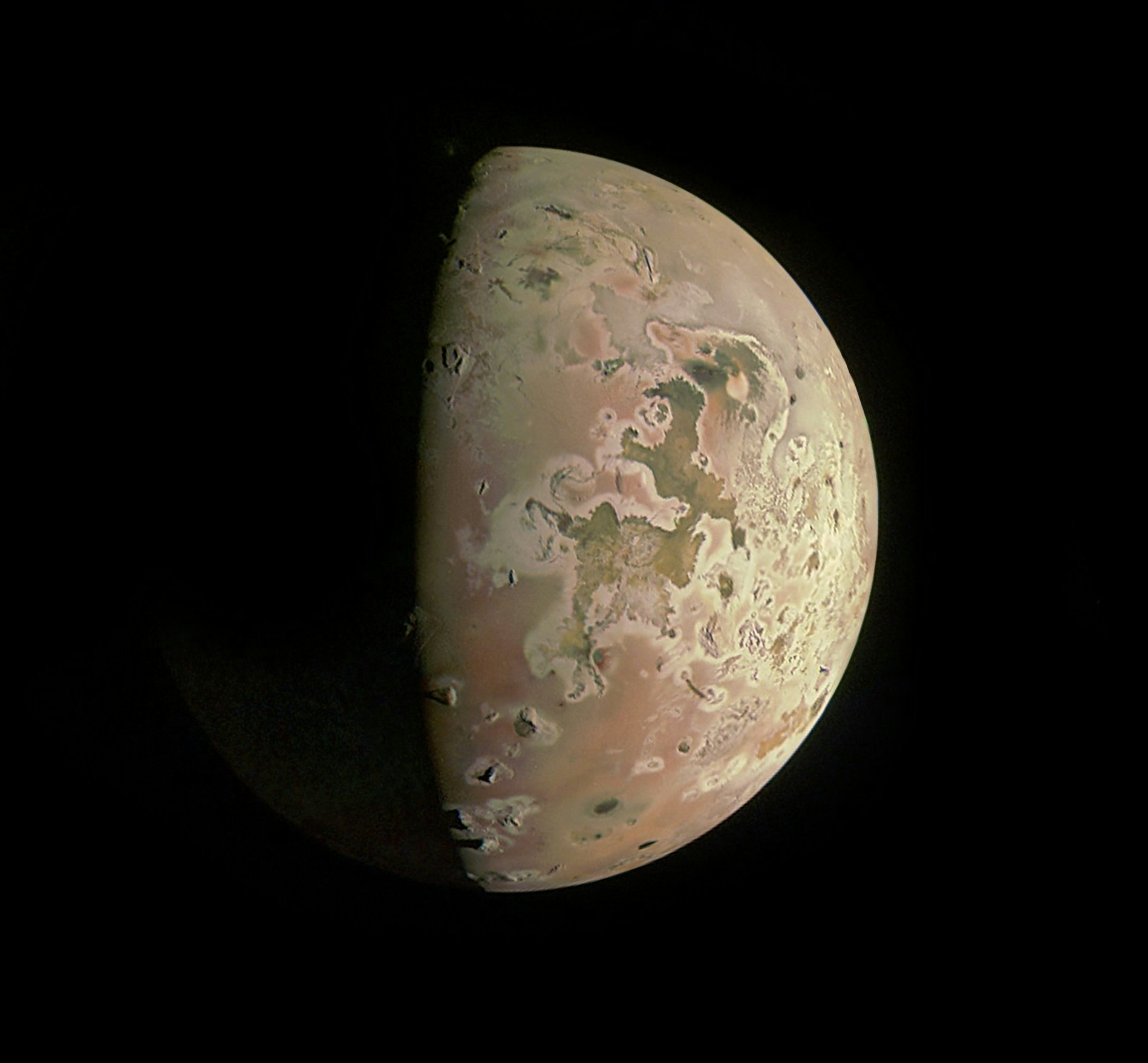
NASA’s Juno spacecraft snapped this photo of Jupiter’s very scary moon Io, just in time for Halloween.
At first glance, Jupiter’s moon Io looks like it’s painted in cozy autumn colors: shades of yellow, orange, red, and brown. But Io is not a cozy place, and you’ll find no fall foliage here. It’s a deadly alien hellscape, rimed in frozen sulfur and dotted with churning lakes of lava. More than four hundred volcanoes spew fire and ash into Io’s choking yellow skies — some spouting fountains of lava hundreds of miles into the air.
And NASA’s Juno spacecraft just sent home our closest look at this hellish world in 20 years.
Trick or Treat, Smell My Feet Sulfur Dioxide
June flew just 7,500 miles above the rumbling, fiery surface Io on October 15, and its JunoCam instrument captured this striking image. NASA included JunoCam on the mission specifically to capture data for citizen scientists and image processing enthusiasts to turn into images (there’s also a bustling online community of people doing the same thing with JWST data, with some stunning results). And that’s exactly what image processor Ted Styrk did with the October 15 JunoCam data.

In another version of the image, which NASA chose as its Astronomy Picture of the Day for October 23, image processor Fernando Garcia Navarro added an AI filter, giving the moon a baleful reddish hue but also making some surface features visible in more detail.
“The filtered version does show features more distinctly, but at the cost of being a lot less realistic,” wrote Styrk in a Twitter post.
Io’s extreme volcanoes are the product of a gravitational tug-of-war between gas giant Jupiter and nearby moons Ganymede and Europa, which keep stretching and sloshing Io’s molten interior. In the coming months, Juno is set to venture even closer to Io. The spacecraft’s next flybys are scheduled for December 3 and February 24. The last one will bring it within 933 miles of the surface, skimming just 680 miles above the tops of the tallest lava fountains.







